Search
Ancient Greek coin minted in Selge, Pisidia ~200BCE


This coin was minted in the Ancient Greek settlement of Selge, Pisidia. Coins of this type are from approximately 200 BCE to 100 BCE. It is a very small coin measuring in at 11mm and 2.01g in weight.
The obverse is a very off center portrait of Hercules wreathed with styrax, wearing a lionskin around his neck and a club over his shoulder. You can make out the lionskin clasp, the right eye is all the way at the top in the center, just to the left and down a little is the wreath. The reverse is the best part of this coin and has made it one of my favorite coins I've cleaned so far, it is the front of a stag looking back as it runs (presumable from a hunter). The greek letters Sigma (Σ), Epsilon (E), lambda (Λ) are the first 3 letters of the city Σέλγη • (Sélgē).
This was a great coin to clean, as I was working away at the layers of dirt I decided to leave some of it in place as an artistic choice. I really feel leaving some of the dirt in the field provides contrast to the heavily warn lettering and the stag. I cleaned this coin without knowing what to expect and the obverse was especially challenging because the portrait didn't make sense. It looked and felt like a blob as I was cleaning it. When 'digging' into the eye I was second guessing myself but experience was telling me it was fine. After identifying coin i can see why it was so confusing... the portrait is extremely blocky. In hand the obverse looks a lot better and you can make out more detail than the picture shows. I tried to get as much detail as I could when taking the picture but the 2D nature of the photo really doesn't do it justice.
I was not able to find an exact copy of the coin online but i found many extremely similar ones here. With the most similar one being SNG vA 5286 I'm mostly familiar with Roman coin attribution so I don't really know what SNG vA 5286 means... if anyone knows and can explain it please do :-) I think its a reference book and entry number
Probus, PAX AVGVSTI (RIC V 712)
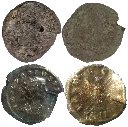

I hesitate to post this coin because I really butchered it. It was among the first coins I cleaned and I followed some advice I found online that led to my stripping the highlights down to the bronze beneath which is a HUGE no-no. I still adore this coin because it was the first coin I cleaned that I was able to identify. So many of the ones before it were featureless. I call it my chocolate coin because the patina is a rich brown color. Despite my butchering the coin I find it aesthetically pleasing and it holds a special place in my heart. I really hadn't learned how to photograph coins yet when I took the before/after pictures here. You can see progress in my leaning coin photography by seeing the difference between the before/after here and some of my more recent coins I've posted. You can find out more about the coin here: RIC V 715
Minted to commemorate the founding of Constantinople.

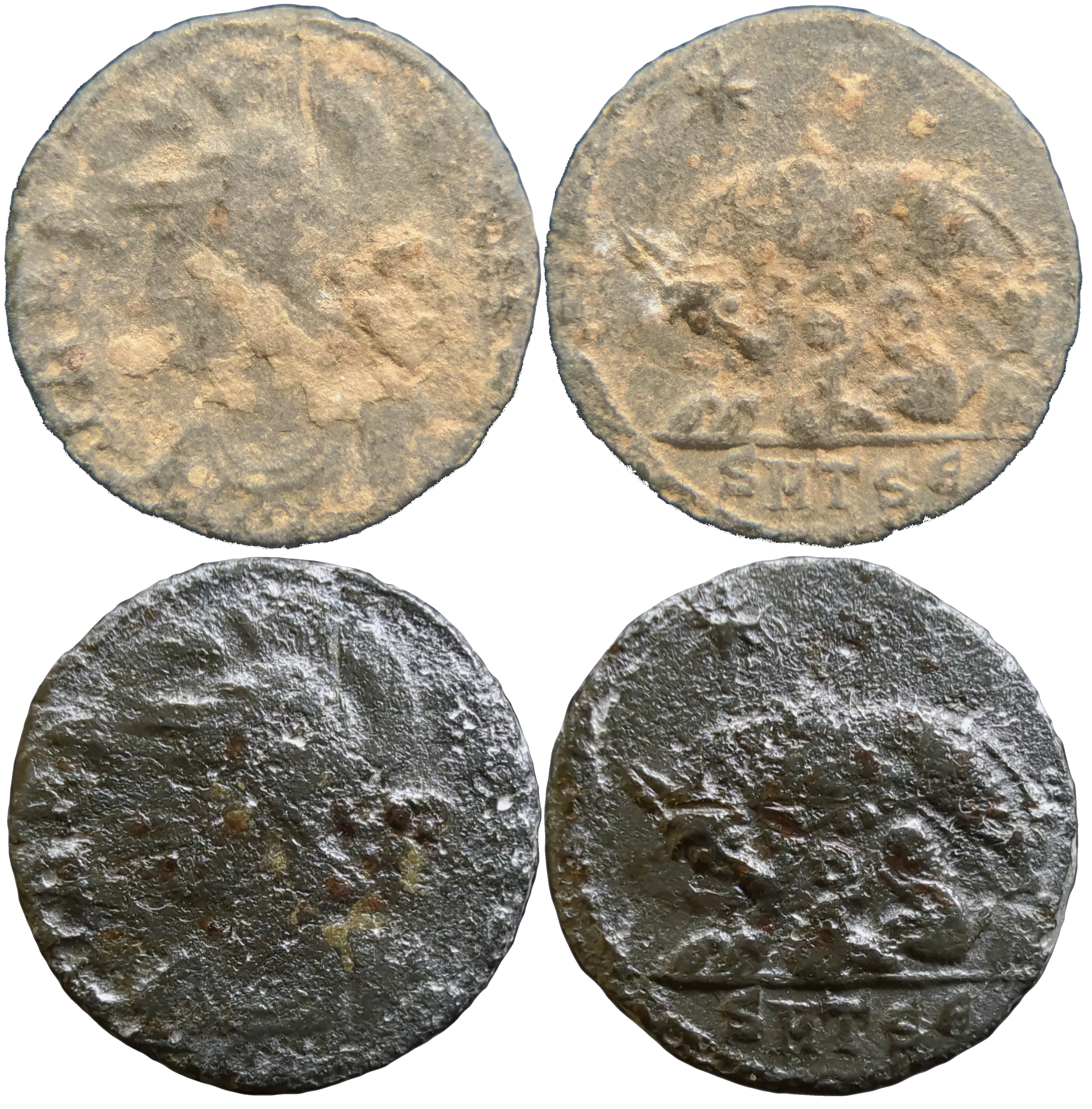
When I first started cleaning Ancient Coins, I bought a bag of "practice coins". They're coins in such poor condition that they're sold in bags by the pound. The vast majority of the coins are almost completely unidentifiable. I spent a year cleaning every coin in that bag (over 100) learning how to clean coins without damaging them. This is the best coin in the entire bag. I find it neat because its a coin made to celebrate the famous city of Constantinople. This particular coin was minted in Thessalonica (Greece). If you don't know Roman history then you might find it strange to see two kids being suckled by a Wolf but this is a symbol for the city of Rome and the two kids are Romulus and Remus which is from the story of the founding of Rome. On the obverse is Roma the "personification" of Rome. Normally coins of this type have two stars above the wolf, but I only see 1 on this one. I don't know if I have something special or not but I doubt it. You can much better examples of this coin here RIC VII Thessalonica 187
Claudius with Minerva (RIC I 116)
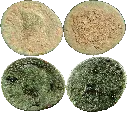
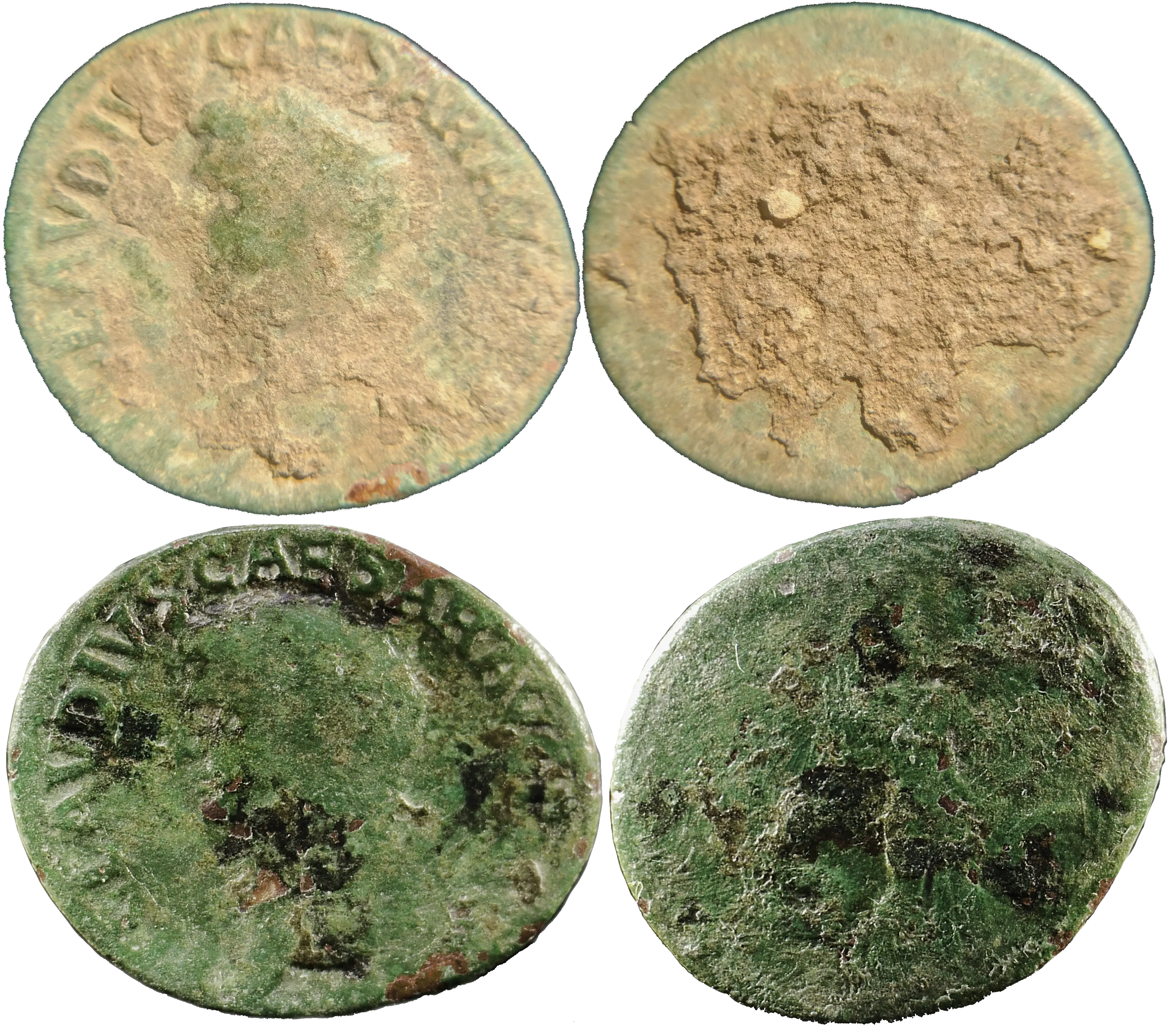
Its tempting to only post the best results or coins that are my favorite, but I think its important to show that the results aren't always great and you end up with a meh coin. Although the vast majority of the patina is preserved on this coin, its so warn that you can barely make out Minerva on the reverse. The coin looks better in hand. I do like that the lettering is easy to read on this coin and you can easily make out CAESAR just above Claudius's head. You can find many great examples of this coin here RIC I 116 or even on here with the other coin of this type I have.
Tiberius (RIC 1 44)
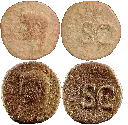
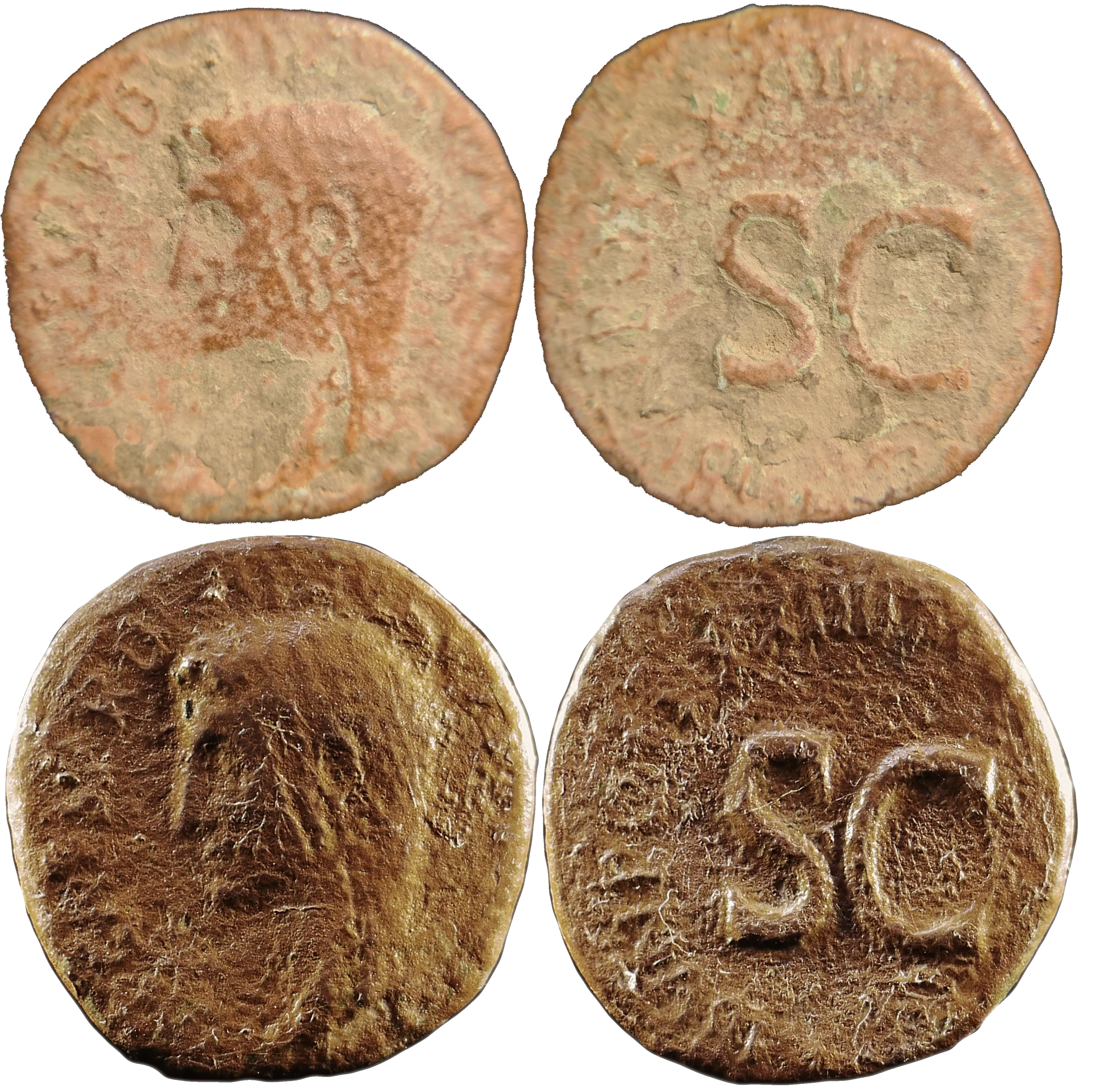
Despite there being little to no detail to this coin, I'm still very fond of it. I'm actually proud of myself that I was able to attribute it at all given how warn the coin is. The obverse depicts Emperor Tiberius is considered one of the great 12 Roman emperors. The reverse has SC in large text which indicates it was minted and distributed under the authority of the roman senate. Better examples of this coin can be found here: RIC 1 44
Claudius with Minerva (RIC I 116)
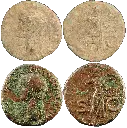
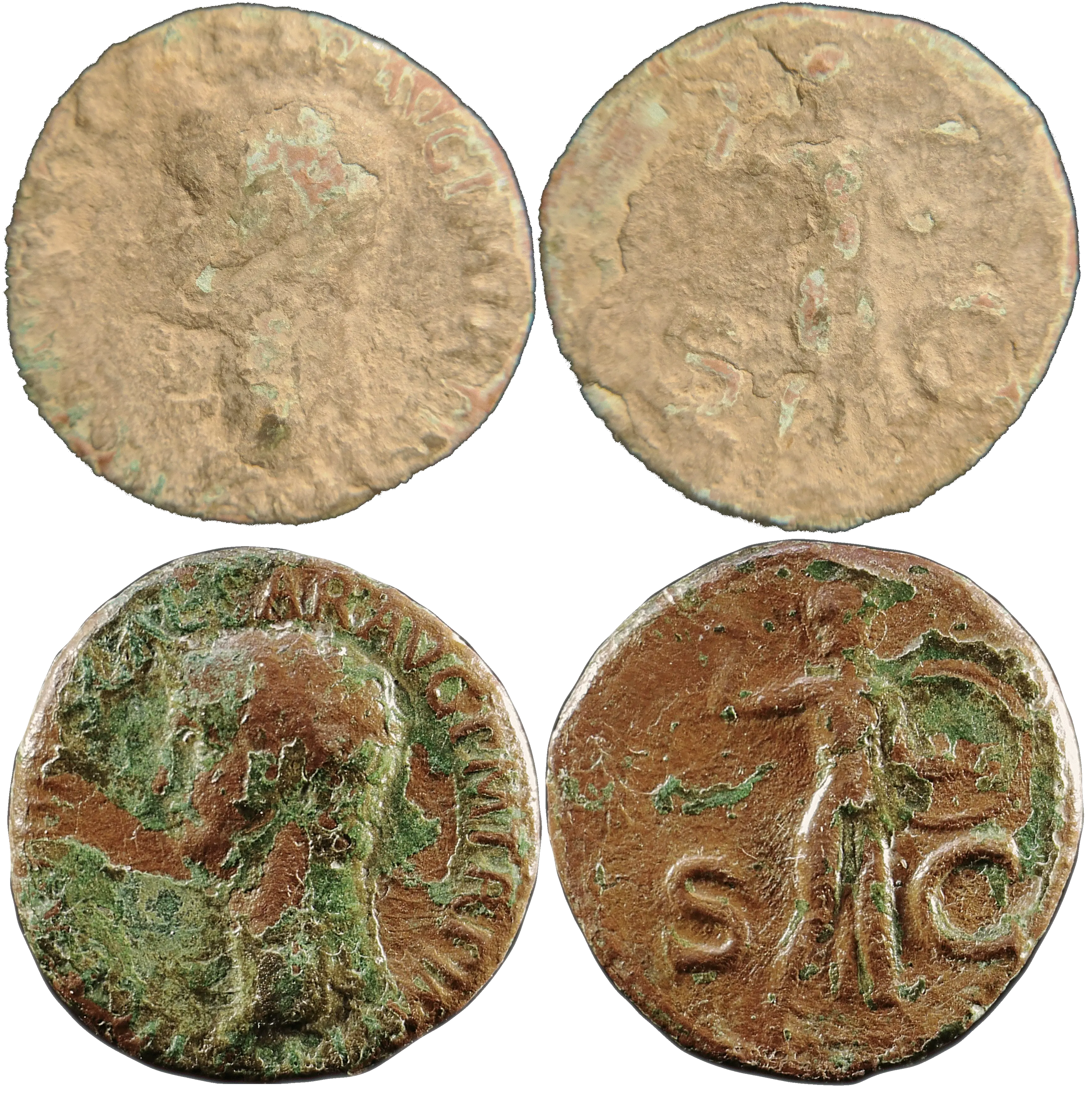
This is one of my favorite coins I've cleaned so far. I've preserved what little patina there was and it forms a marbling effect that I find pleasing. This coin soaked in distilled water for about 7 months and I only used toothpicks on it to clean. It really didn't require more than just some patience. Attribution was easy RIC I 116 it was minted in Rome around the year 50 and has the bust of Claudius who is considered one of the 12 great emperors of Rome. The reverse depicts Minerva (Athena) which is one of my favorite Roman gods. All around a great coin and its one of the gems of my collection.